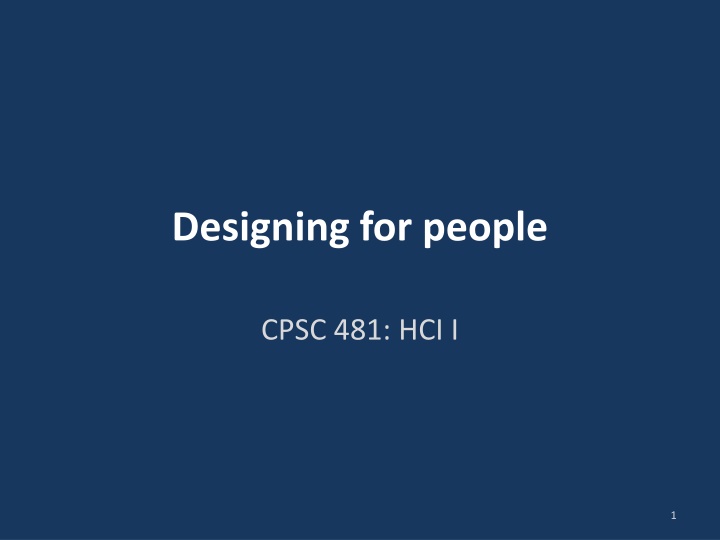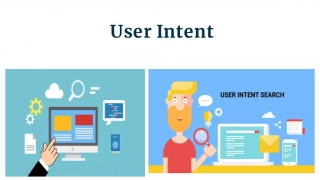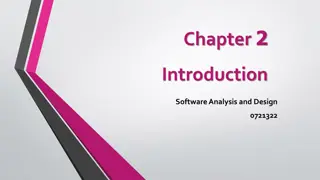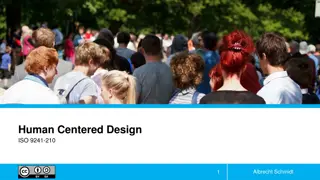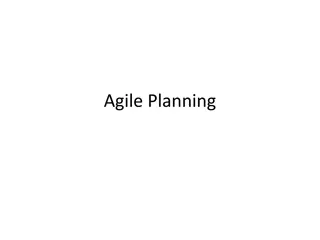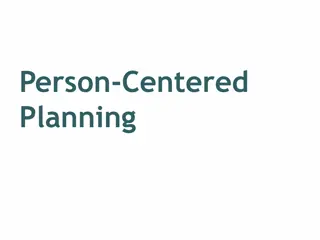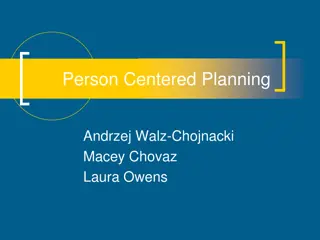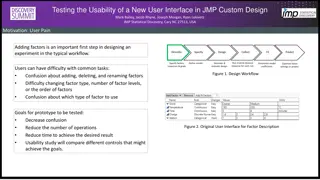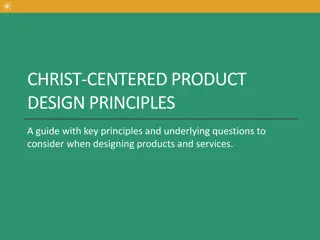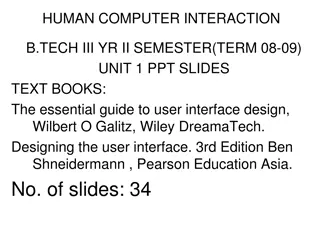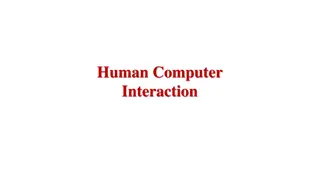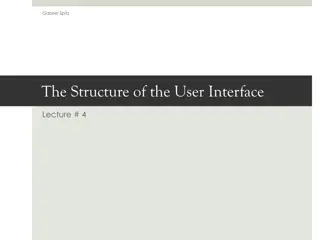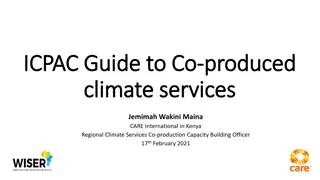User-Centered Design Process Overview
This compilation delves into the essence of a user-centered design process, emphasizing understanding user needs, prototyping, evaluation, and iteration for successful product development. Explore the importance of investigating, ideating, and producing in HCI design.
Uploaded on Feb 19, 2025 | 0 Views
Download Presentation

Please find below an Image/Link to download the presentation.
The content on the website is provided AS IS for your information and personal use only. It may not be sold, licensed, or shared on other websites without obtaining consent from the author.If you encounter any issues during the download, it is possible that the publisher has removed the file from their server.
You are allowed to download the files provided on this website for personal or commercial use, subject to the condition that they are used lawfully. All files are the property of their respective owners.
The content on the website is provided AS IS for your information and personal use only. It may not be sold, licensed, or shared on other websites without obtaining consent from the author.
E N D
Presentation Transcript
Designing for people CPSC 481: HCI I 1
Agenda User is not like me So what should we do? User-centred design process Rationale Major components: investigate, ideate, prototype, evaluate, produce Role of iteration 2
Last time User is not like me Perceptual capacity Motor capacity Cognitive capacity Domain knowledge 3
Know your user! You are not (usually) your user. 5
User Centered Design Process An iterative design process that makes use of knowledge through investigation of a domain of work/play to create ideas and prototypes. Prototypes are used for evaluation, and to further stimulate investigation, and idea and prototype generation. These prototypes and evaluations are used to aid in production. 6
Why a process? Get started in a proven tack Prevents designer s block Directs us toward final product Helps us stay on schedule and on cost Helps us to communicate with others More reliable than intuition Forces us to iterate Helps to keep the users first 7
Generate lots of ideas Grasp issues and potential solutions Stage Goals Learn about stakeholders Discover goals and needs How is it done now? What is wanted? What else has been tried? Build final product Ramp up marketing, support, and maintenance Produce something tangible Identify challenges Uncover subtleties Discover problems Assess progress Determine next steps 9
Investigate 10
Why investigate? You cannot design apart from the world where your users and design will live 11
Investigation Questions Identify users Identify stakeholders What are the requirements? How do they do it now? How long does it take? What do they want? What do they need? What have they already tried? Is there another solution? 12
Investigation Methods Interviews Focus groups User surveys [More on this next lecture] 13
Ideate 14
Ideation -> idea generation To get good ideas Get lots of ideas 15
Ideation One of the worst things: go with the first one you have You can always come back to it later Volume matters the most Increase chance of success by considering a huge volume of ideas in a systematic way 16
Ideation Structured brainstorming Sketching Affinity diagramming Card sorting Personas Role-playing, play-acting [More in the next couple lectures] 21
Prototype 22
Why prototype? It s cheap and fast Easier for users to react to concrete things rather than abstract concepts Prototyping brings subtleties and nuances to light Working against some technical constraints is good 23
Prototyping Techniques Paper prototypes Screenshots Flip books Video mock-ups Hyperlink prototypes Functional prototypes [More next week] 24
Prototyping Fundamentals Build it fast Concentrate on unknowns Don t be attached to them Build multiple concurrently easier to compare pros/cons 26
Evaluate 27
Why evaluation? Automated processes can find bugs, but not usability issues Evaluation gives you a way to move forward What needs to be fixed, added, removed? Answers to two questions: Did we build the right thing? Did we build the thing right? 28
Evaluation Methods Usability testing Laboratory experiments Real-world deployments Heuristic evaluation [More on this in the coming weeks] 29
Evaluation Drives Iteration Problem: usefulness/appropriateness Return to investigation phase Problem: users don t understand Return to ideation phase Problem: user performance Return to prototyping phase 31
Produce 32
Production These are steps required to go from functional prototype to release candidate Software architecture Programming, building Manufacturing Help systems Manuals Training Customer support Marketing Branding Distribution 33
User Centered Design: Conclusions Design starts with understanding your user, and should keep users interests central Design is iterative -> trade-offs are difficult to see in advance Designs are never perfect -> usually, they can be improved 34
